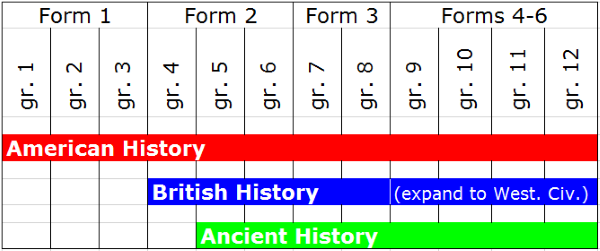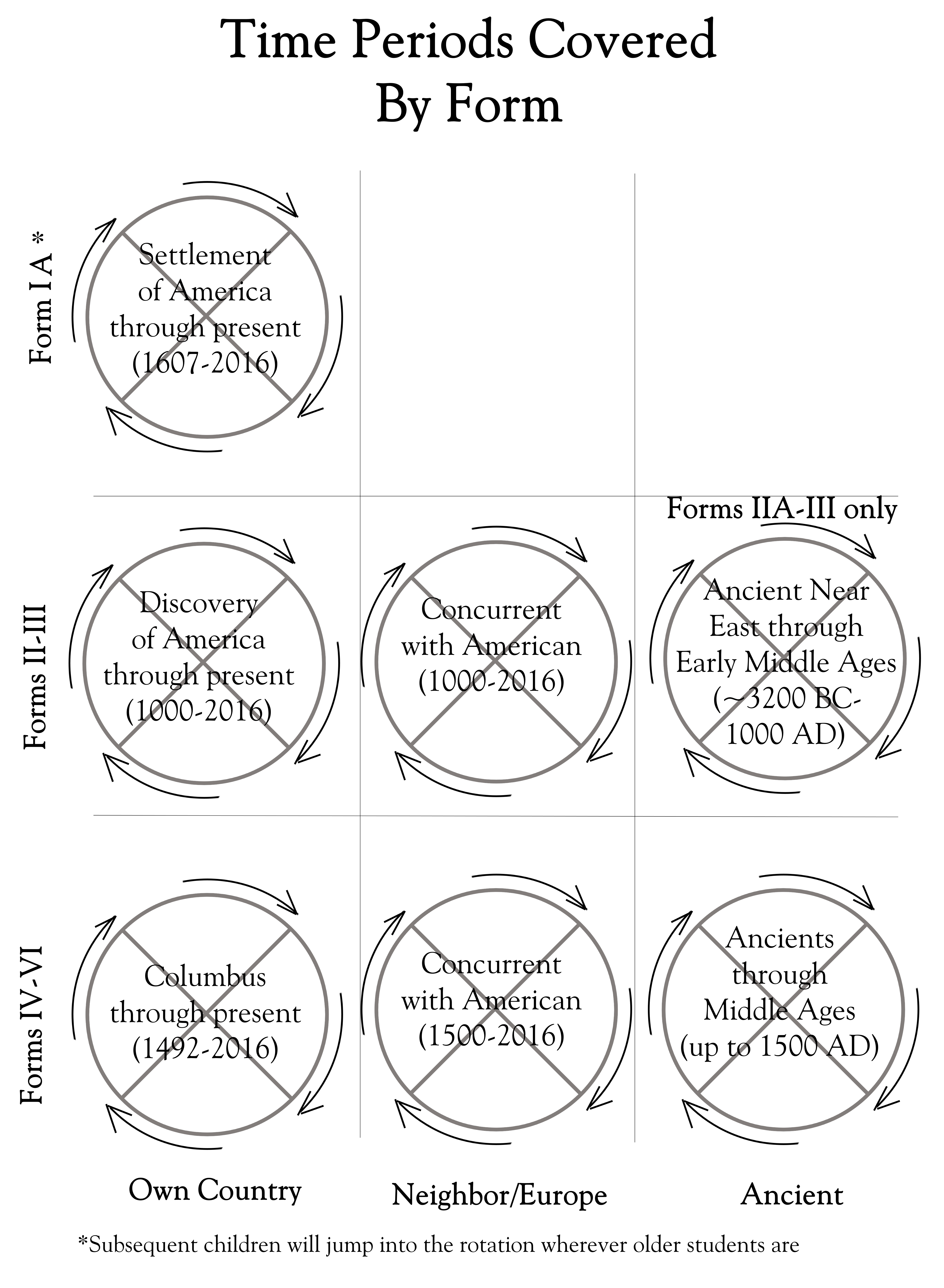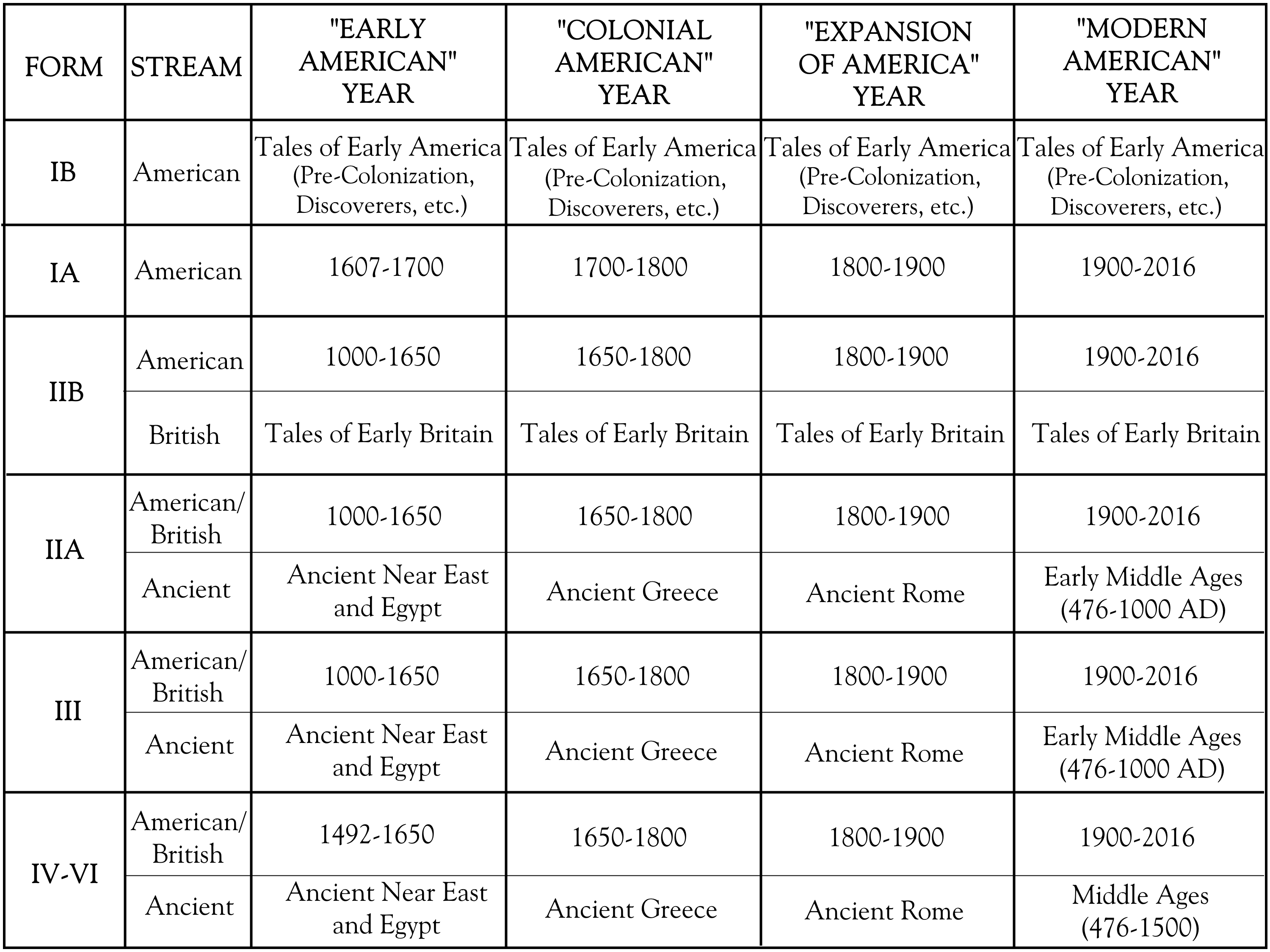Since we aired our podcasts about history (Why Study History, The Chronology of History, History Books, and History Things), we have received many requests to clarify how history is studied throughout the “forms.” We offer the following visual aids to attempt to represent the various streams of history studied, as well as the rotation chronologically over the years for today’s American students. We welcome further questions in the comments on this page.
Below is a chart of when a student begins each History Stream:
For example, British History is begun in the first year of Form 2 (grade 4), and in Form 4, or 9th grade, instead of focusing just on British History, this stream becomes general Western Civilization. Ancient History is begun in the second year of Form 2 (grade 5). We hope this chart helps you visualize that once begun, the three streams are continued throughout a child’s school education.
For further explanation, the chart below is a more detailed representation of what time periods each form would study:
TimePeriods
{Click above to download a printable version of the above chart}
Each circle represents a four-year rotation of that particular stream. Let’s begin at the top row, and I’ll walk you through.
This row of the chart represents Form IA (grades 2 and 3). As you can see, Form IA students only study American History (indicated by the red circle). Each circle in this diagram is broken into four “pie” pieces, which is attempting to show that this particular time period would be studied over the course of four years. Each year of this rotation is represented by one quadrant of the circle. The span of time that is covered by Form I students is noted inside the circle (1607-present). The arrows around the outside of the circle indicate that no matter which year a student begins their history study, once begun they will continue around until they move up to another form.
So far, this is pretty straightforward, but what seems to be confusing is how this enables a family (or entire school) to study the same time period at the same time. If you go back and listen to Episode 12, The Chronology of History, you will hear Emily attempt to explain the “telescoping” nature of PNEU history. What this means is that each form (or group of forms) has their own span of time that they focus on, but as a student approaches the present day, a smaller chunk of history would be covered each year. The largest chunk of time would be covered in the first year of each cycle.
One other thing to note is that a student doesn’t have to complete each rotation in every form they are in, and this is where synchronizing all history studies really pays off. Your first student begins school with one year of tales from the heroic age of their country (in this case America). The next year they begin their chronological study and the following year they continue to the next year of their rotation (see diagram below). This brings them to the end of Form I, so the following year, grade 4, they begin Form II and continue on with their American history in the next year (or column in the diagram below) of their cycle. They also begin British history at this point, with a year of tales from the heroic age of Britain. The next year, grade 5, the student moves on to the final year of their rotation in American and British history (since those two streams should always be in contemporaneous time periods) and adds in the Ancient history stream, also in that same column (again, refer to the diagram below). The following year (grade 6) this particular student would continue on with Form 2 and return to the beginning of the cycle in all three streams.
{See above to download a printable version of this chart}
Whenever another child begins school, they start with that year of tales in 1st grade and then in 2nd-grade jump right in wherever the other student is, say “The Expansion of America” year or “Modern America Year” or whichever year of the rotation the “school” is in. The jumps between forms will still keep a child moving forward chronologically in history, and by the time they complete grade 12, they will have cycled through history about three times.
Feel free to ask for further clarification in the comments below. We haven’t wanted to sound like we are just trying to sell something, but we have come up with a plan for today’s American students that takes all of these streams into account. If you would like help planning out what your own students should be studying, we are available for individual consultations. Click on the button in the sidebar that says “Personal Charlotte Mason Help” for more information.



